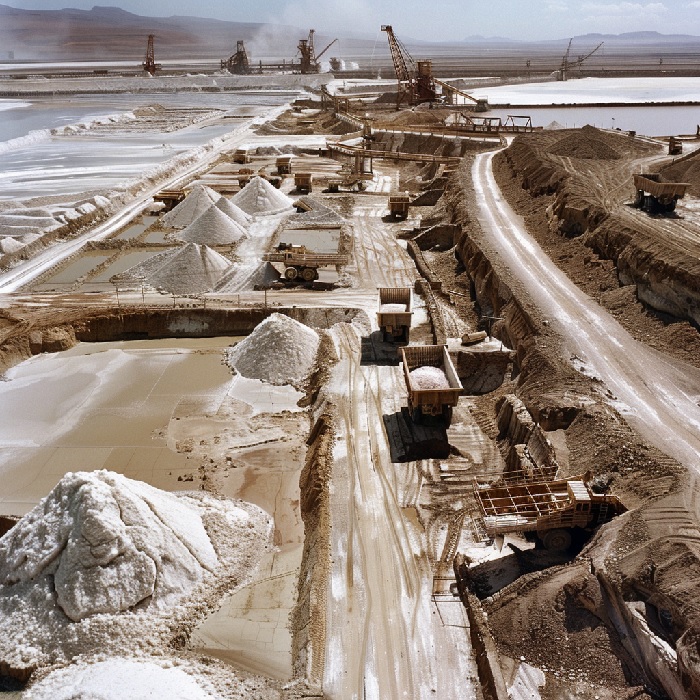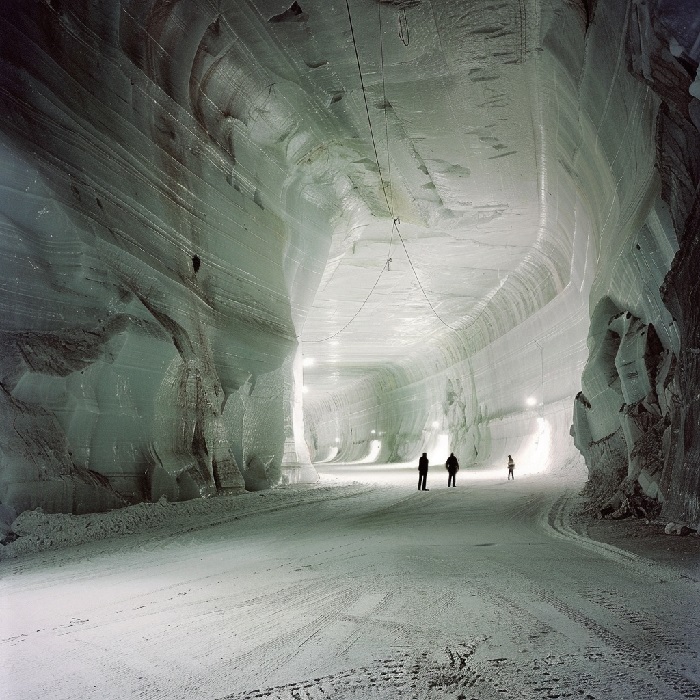SALT
SALT :
Salt, one of the basic human tastes, is the most popular food seasoning. This mineral is produced in various forms, namely crude salt (such as Sea Salt), cultured salt (ordinary table salt), and iodized salt. The term "salt" has ancient origins and has appeared in various forms in early English. Generally crystalline in appearance, it is extracted from rock deposits or seawater and can be white, pale pink, or light grey in color.
The most primitive evidence of salt processing dates back to 6,000 years. Being an important commodity, the scarcity of this mineral has led nations to go to war over salt and to raise tax revenue. In salt manufacturing, approximately only 6% is used in food. Of the remainder, 12% is used in water conditioning processes, 6% is used in agriculture, and 8% for de-icing highways.

The rest of it is used for manufacturing and other industrial processes. The largest salt mining operation in the world takes place at the Khewra Salt Mine in Pakistan. More than 40% of salt is used in the chemical industry in the United States, predominantly for the production of chlorine and caustic soda.
WHERE DO THEY FORM SALT :
Salt can form in various ways, including through the evaporation of seawater, the precipitation of calcium and magnesium from the atmosphere, or the accumulation of minerals from the erosion of rocks and soil. Elaborate salt deposits can form when large bodies of water evaporate, leaving behind salt-rich minerals. These deposits can occur naturally or be artificially created through industrial processes.
TYPES OF SALT :
Salt is a mineral composed primarily of sodium chloride (NaCl). It is found in vast quantities in seawater, where it serves as the main mineral constituent. Besides its primary use as a seasoning or preservative, salt has many other uses. It is utilized in industrial processes such as tanning, dyeing, and the manufacture of soaps and detergents.
-
Table Salt: This is the most common type of salt and is used for cooking and seasoning food. It consists of small, uniform crystals and is mostly composed of sodium chloride.
-
Coarse Salt: This type of salt is larger in size and has a more textured consistency. It is used for pickling and curing meats, as well as for adding texture to dishes.
-
Kosher Salt: This is a coarse, flaky type of salt used in Jewish cooking. It does not contain any additives or preservatives and is generally used for seasoning and curing.
-
Sea Salt: This type of salt is produced by evaporating seawater. It contains trace minerals and has a stronger flavor than table salt. It is often used to finish dishes or as a garnish.
Himalayan Salt: Mined from ancient seabeds in the Himalayas, this salt is pink in color and contains more minerals than other types. It is often used as a finishing salt or in bath salts.
-
Fleur de Sel: Hand-harvested in France, this salt has a delicate flavor and is often used as a finishing touch on dishes.
-
Rock Salt: Mined from underground deposits, this salt is used to make ice cream and homemade pretzels. It is also used to de-ice roads and sidewalks during winter.
EXTRACTING AND REFINING:
Salt extraction - Salt extraction is the process of extracting salt from salt-rich sources such as the ocean, brine pools, and underground salt deposits. The process involves various techniques, including the use of pumps, evaporation ponds, and solar evaporation. In some cases, the salt may be harvested directly from the source, while in others, it may need processing to remove impurities. Salt extraction is a crucial aspect of the global salt industry, providing a sustainable source of salt for commercial and industrial use.
To refine salt - To refine salt, one can employ a process called evaporation. This entails boiling the saltwater and then collecting the salt as it dries. To enhance the process, one can add certain ingredients such as herbs or spices to the boiling water, allowing the salt to absorb their flavors as it dries. Additionally, experimenting with different temperatures and evaporation times can further influence the flavor of the salt.

TYPES OF SALT :
1. Oceans : Salt is naturally present in the oceans due to the chemical makeup of seawater. This is the primary source of salt used in commercial production.
2. Sea Salt : Sea salt is formed when seawater evaporates, leaving behind dissolved salts. It is often considered the highest quality of salt and is commonly used in cooking.
3. Rock Salt : Rock salt is created when underground salt deposits are mined from the earth. This type of salt is usually the least expensive and is often used for de-icing surfaces in winter.
4. Solar Salt : Solar salt is created by evaporating seawater in salt pans or using large evaporators. It has a slightly different taste than other types of salt and is often used in food processing.
5. Table Salt : Table salt is created by combining sodium chloride with other minerals and additives, such as iodine. It is also used in food processing and as an additive in processed foods.









